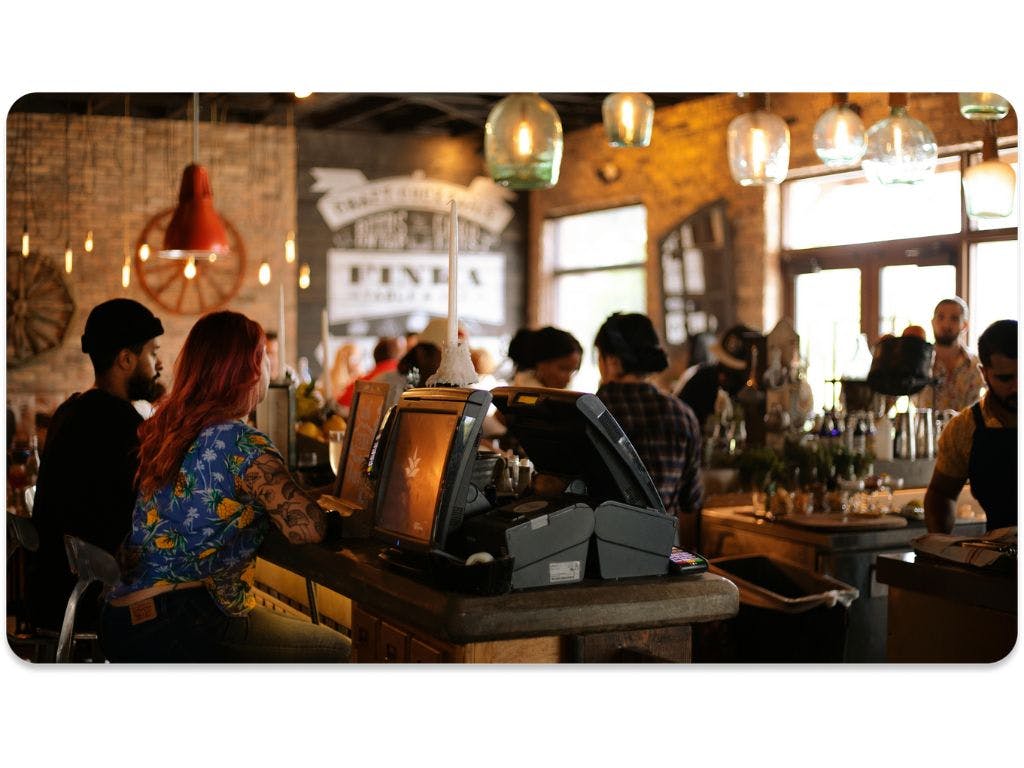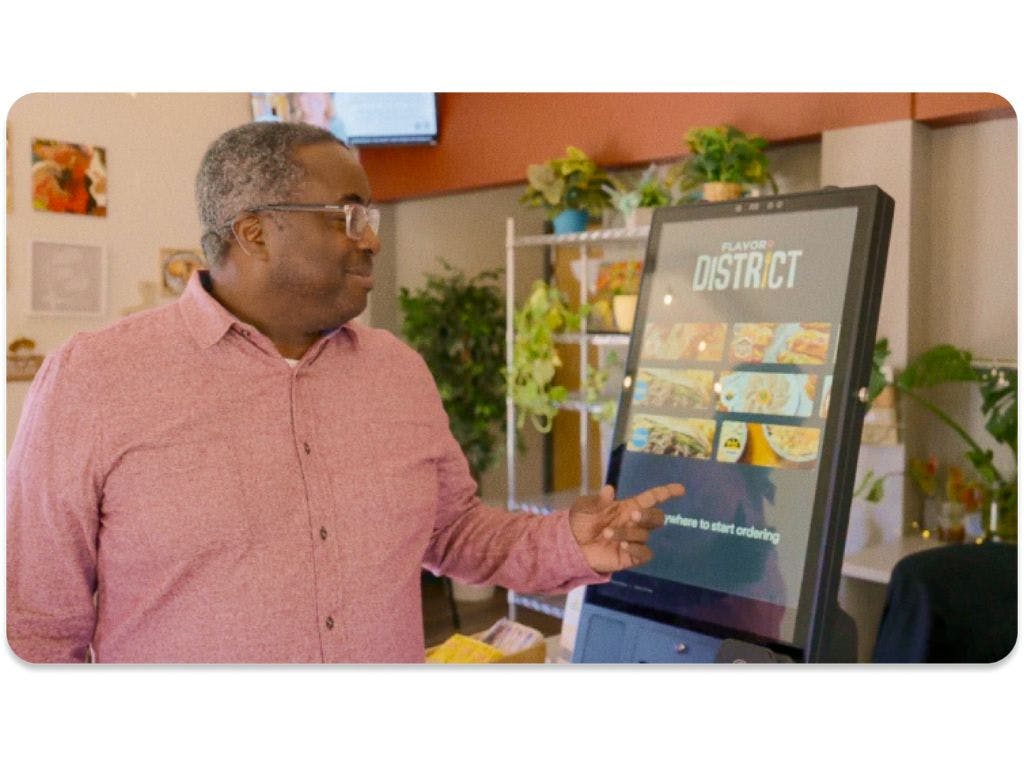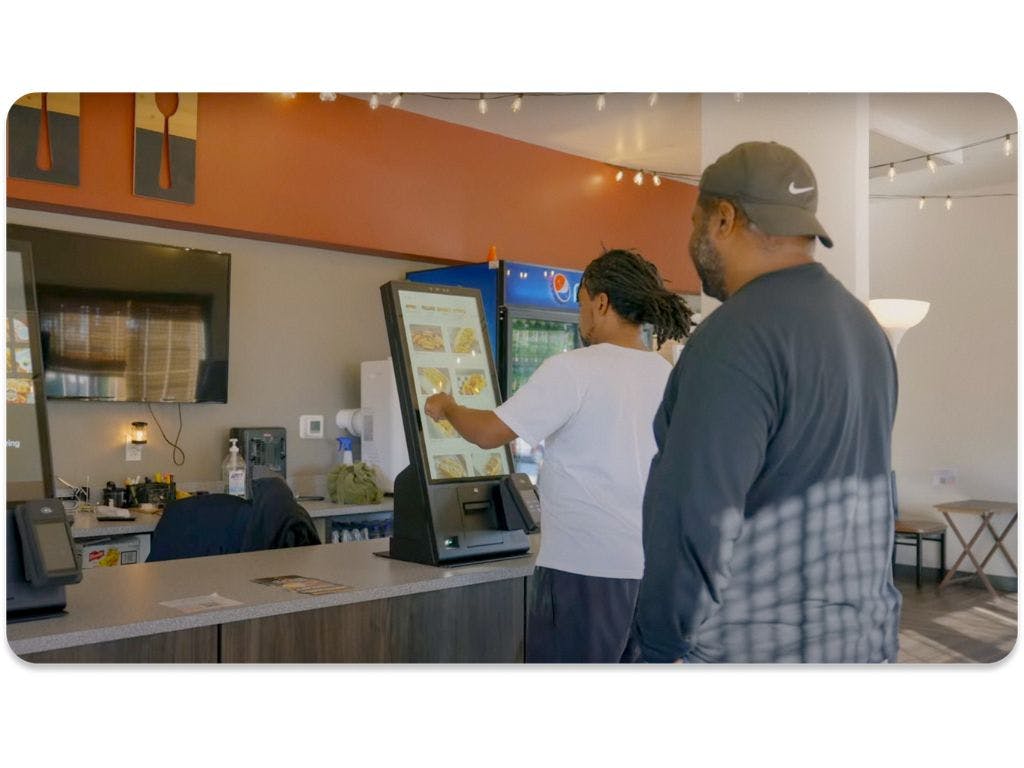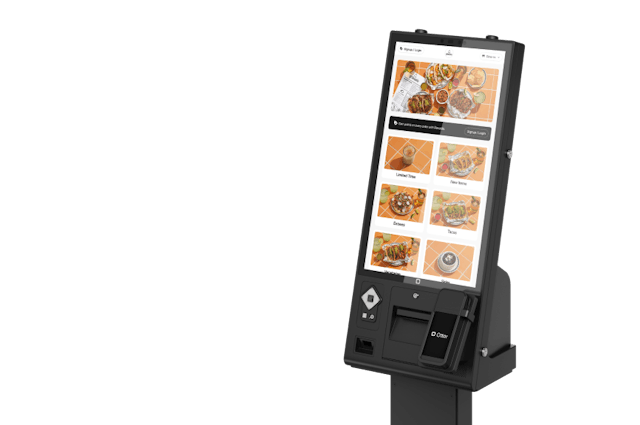
Table of contents
In the rapidly evolving restaurant industry, self-service kiosks have become an increasingly popular solution for enhancing customer experiences, streamlining operations, and addressing labor challenges. These touch-screen devices, strategically placed in ordering areas or tableside, allow restaurant customers to browse menus, place orders, and complete payments without direct staff interaction.
While initially pioneered by fast-food chains, self-service kiosks are now widely adopted across diverse restaurant types, from quick-service and fast-casual eateries to full-service dining establishments.
The rise of self-service kiosks is driven by several factors – including customer demand for faster, more convenient service and restaurants' needs to optimize workflows amid staffing shortages and cost pressures.
Studies show that customers increasingly value the autonomy and control these kiosks provide, especially for customizing orders, adding on more items, and exploring menu options at their own pace. For both single restaurants and multi-location restaurants, kiosks offer an effective way to increase order accuracy, enhance operational efficiency, and drive higher revenue.
As the benefits of kiosks extend across various service models, many restaurants are leveraging this technology to improve both customer satisfaction and their bottom line. In the sections that follow, we'll explore how self-service kiosks are revolutionizing dining experiences and the unique advantages they bring to different restaurant types.
Self-service kiosks for different types of restaurants

Self-service kiosks are versatile solutions that can greatly improve efficiency and customer experience across various restaurant types, including:
Quick-service restaurants (QSRs)
In fast-food and quick-service settings, kiosks offer an immediate solution for managing high customer volume. They expedite the ordering process, allowing customers to place and customize orders independently on the platform, freeing up staff to focus on food preparation and other customer needs. Notably, chains like McDonald's have demonstrated how self-ordering kiosks can reduce wait times and enhance order accuracy.
Casual dining and fast-casual restaurants
Fast-casual establishments can benefit from kiosks by enhancing the customer experience and offering a more efficient alternative to traditional ordering. Kiosks also appeal to the growing segment of tech-savvy diners who appreciate a streamlined process. Fast-casual brand Panera Bread, for example, has effectively incorporated kiosks, which have contributed to increased customer satisfaction and boosted order accuracy.
Full-service restaurants
Although less common in full-service settings, kiosks can add value by providing an option for guests to place orders for certain items—like drinks or desserts—on their own, which can speed up service during peak times. Additionally, kiosks can allow diners to review menu items, dietary information, or seasonal specials while they wait for their server, enhancing the overall dining experience.
9 top advantages of self-service kiosks

Self-service kiosks are transforming the restaurant landscape by offering a range of benefits that improve front and back-of-house operational efficiency and customer satisfaction. Here’s a detailed look at the top benefits of implementing self-service kiosks in your restaurant:
1. Faster service and shorter wait times
Speed is essential in the fast-paced dining industry, and self-service kiosks excel in reducing wait times. By allowing customers to order and pay independently, restaurant kiosks help alleviate long lines and impatient customers that typically form during peak hours. Customers can skip the lines, browse the menu at their own pace, and place their orders in seconds.
Studies have shown that self-service kiosks can reduce order times by up to 40%, allowing restaurants to serve more customers during busy periods without compromising quality. Faster service translates into happier customers and higher table turnover rates, especially beneficial for quick-service and fast-casual restaurants.
2. Improved order accuracy and reduced long lines
One common frustration in the dining experience is receiving an incorrect order. With self-service kiosks, customers are responsible for inputting their orders directly, reducing the chance of miscommunication between the customer and the cashier, and ensuring tickets can be sent straight to the kitchen.
This increased order accuracy means fewer errors, leading to satisfied customers, less food waste, and reduced rework for the kitchen staff. For restaurants, improved order accuracy can lead to significant cost savings and a memorable customer experience, which ultimately strengthens customer loyalty. Additionally, the reduced need for staff to handle orders allows them to focus on other critical tasks, further improving the overall flow of the restaurant.
3. Reduced labor costs
Labor costs are one of the largest expenses for restaurant operators. Self-service kiosks can help alleviate some of this financial burden, directly contributing to increased profitability. By allowing customers to take over the ordering process, kiosks reduce the need for front-of-house cashiers and order-takers, enabling restaurant owners to streamline their staffing needs and lower overhead costs.
Although kiosks come with an initial installation cost, they typically pay for themselves within a few months due to significant savings in labor expenses. The freed-up staff can be redirected to other areas, such as food preparation, cleaning, or providing enhanced customer service.
This efficient allocation of resources not only keeps costs down but also helps maintain a high-quality dining or takeout experience without the need for additional staffing. Over time, these labor cost reductions significantly boost profitability by optimizing workforce management and allowing restaurants to operate more efficiently.
4. Increased revenue through more upselling opportunities
Self-service kiosks are programmed with advanced algorithms that prompt customers with recommended add-ons, upgrades, and popular items as they place their orders.
Unlike a human cashier who may feel awkward suggesting add-ons, kiosks consistently encourage customers to add onto their meals. This automated upselling can lead to significant increases in average order value—often up to 20% higher per transaction.
For example, a customer ordering a burger might be prompted to add extra toppings, a side of fries, or a dessert, resulting in a more profitable transaction. Over time, these small upsells contribute to a noticeable boost in revenue.
5. Enhanced customer control and satisfaction
Today’s customers value autonomy and control, and self-service kiosks cater to this demand. With a kiosk, customers can take their time to browse the menu, customize their orders according to dietary preferences, and review their choices without feeling rushed. The interface can even display detailed ingredient and allergen information, helping customers make informed decisions about their food.
This added control over the ordering process enhances customer satisfaction and minimizes any sense of pressure to order quickly. Self-service kiosks offer a modern dining experience that resonates particularly well with tech-savvy and younger demographics who value convenience and customization.
6. Data collection, insights, and checkout optimization
One of the often-overlooked benefits of self-service kiosks is their ability to collect data on customer preferences, ordering patterns, and peak times during checkout. This data provides restaurant owners with valuable insights into customer behavior, enabling them to make data-driven decisions that improve both the dining experience and operational efficiency.
For instance, a restaurant could identify popular items to spotlight in marketing campaigns or create targeted promotions based on frequent add-ons during checkout. The ability to track this information allows for a more personalized customer experience, with tailored offers and recommendations.
Over time, this data-driven approach can lead to a more refined menu, better promotional strategies, and a stronger connection with customers, driving repeat visits and boosting sales.
7. Streamlined workflow for staff
By shifting order-taking responsibilities to self-service kiosks, staff members are free to focus on other crucial tasks, such as preparing food and maintaining a clean environment. This redistribution of tasks is especially valuable during peak hours, when every second counts in keeping service running smoothly.
By reducing the burden on front-of-house staff, kiosks help create a more balanced and efficient workflow, allowing employees to work without feeling overwhelmed. This streamlined approach not only improves overall communication but also leads to higher staff morale, as employees can focus on their primary tasks without excessive multitasking.
8. Increased accessibility
Kiosks are adaptable tools that cater to diverse customer needs, including those of different linguistic backgrounds or physical abilities. Many kiosks offer multilingual options, making it easier for non-native speakers to place orders without language barriers.
Additionally, accessibility features such as larger font sizes, screen readers, and voice commands can make kiosks more user-friendly for customers with disabilities. By making ordering accessible to a wider range of customers, restaurants demonstrate a commitment to inclusivity and expand their potential customer base.
9. Better inventory and sales management
Integrating self-service kiosks with a restaurant’s POS system helps automate inventory tracking and sales data collection, offering real-time insights into stock levels and demand. For instance, if a particular menu item is selling out quickly, the system can provide alerts to reorder ingredients, ensuring that popular items remain available.
This automatic tracking streamlines inventory management and helps reduce food waste, which is particularly valuable for high-volume restaurants that need accurate, up-to-date information on ingredient usage and stock.
FAQs

- How much do self-service kiosks cost to install and maintain?
Initial costs for self-service kiosks vary depending on the provider and the level of customization required. While basic kiosks may start at a few thousand dollars, more advanced models with features like facial recognition and personalized recommendations can cost significantly more. Many providers also offer leasing options, and maintenance costs are generally low once kiosks are in place. Check out Otter pricing here.
- How do Otter’s self-service kiosks help with upselling?
Otter’s kiosks come equipped with smart upselling features that prompt customers with relevant add-ons or upgrades based on their selections. This function is designed to increase the average order value while creating a personalized experience for your guests. Plus, the option to add engaging food photos helps encourage customers to buy what they see.
- How do self-service kiosks integrate with existing restaurant systems?
Most kiosks integrate easily with POS systems, allowing for seamless communication between front-of-house and kitchen/back-of-house operations. Look for kiosks that are compatible with your existing software to ensure a smooth transition. Otter POS even turns into their Kiosk interface, providing an additional tablet for customers to place orders on during rush hour.
- Will self-service kiosks reduce the need for restaurant staff?
While kiosks can reduce the need for front-of-house cashiers, they do not eliminate the need for staff. Employees are still essential for food preparation, quality control, and customer service, particularly in full-service and casual dining restaurants. Kiosks are designed to improve work flow for the entire restaurant, not replace staff members – think of it as extra hands.
- What types of restaurants can benefit most from Otter’s self-service kiosks?
Otter’s self-service kiosks are versatile and customizable, making them an excellent fit for quick-service, fast-casual, and multi-location establishments, as well as restaurants that experience peak ordering times. They’re ideal for high-traffic settings, enhancing speed and accuracy while giving customers control over their ordering experience.
Transform your restaurant with Otter's self-service kiosk solutions

Otter's advanced kiosk systems empower restaurant owners to increase sales, improve customer satisfaction, and streamline operations through the power of self-service. With Otter, you can optimize every aspect of your operation—from order accuracy and faster service to automated upselling and seamless inventory tracking. Our self-service kiosks are designed to improve your guests’ experience, minimize labor costs, and drive revenue growth, making them the ultimate addition to any restaurant's tech suite.
Here's what Otter's self-service kiosks offer to make your restaurant run smarter:
- Faster service: Reduce wait times and serve more customers during peak hours
- Enhanced order accuracy: Minimize miscommunication, send tickets directly to the kitchen, and improve customer satisfaction with clear, user-driven ordering.
- Effortless upselling: Increase average check sizes with intuitive, data-backed prompts for add-ons and upgrades.
- Data insights: Gain valuable data on customer preferences to tailor promotions, gain repeat customers, and refine your menu based on patterns in preferences.
“Otter Kiosks cut down the confusion, and speed up the customer experience from beginning to end. My crew is extremely happy and pleased with Otter’s efficiency. The data Otter collects and visualizes really helps us plan better for the future” - Travis Elias, General Manager, Flavor District
With Otter, your restaurant or franchise gains more than just a tool—it gains an edge. Simplify the management process, give your customers more control, and increase your bottom line with Otter's self-service kiosk solution.

Otter self-service kiosks
Cut labor costs & customer wait times with self-service restaurant kiosks.